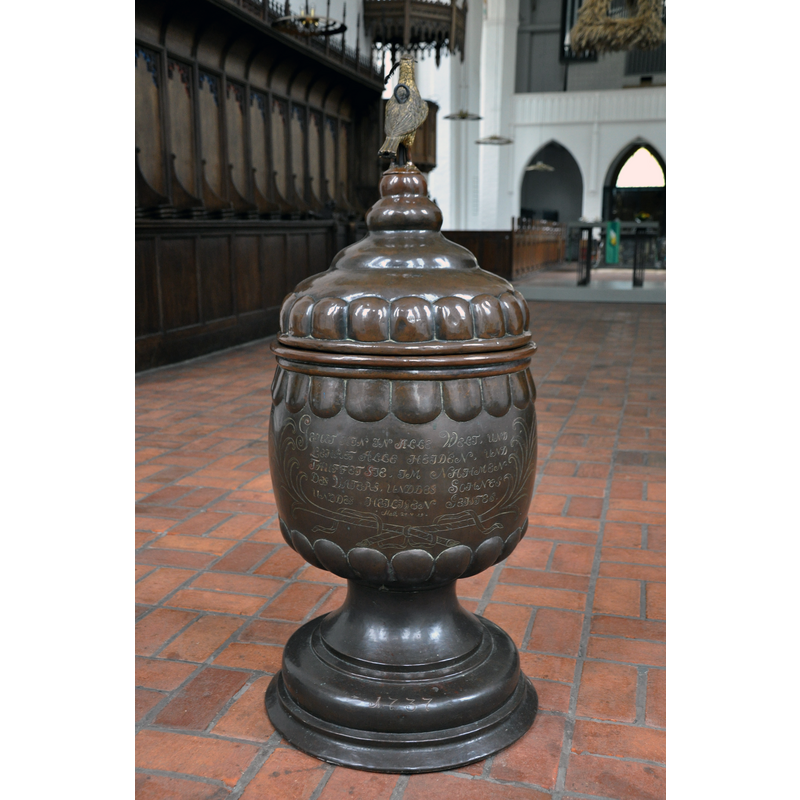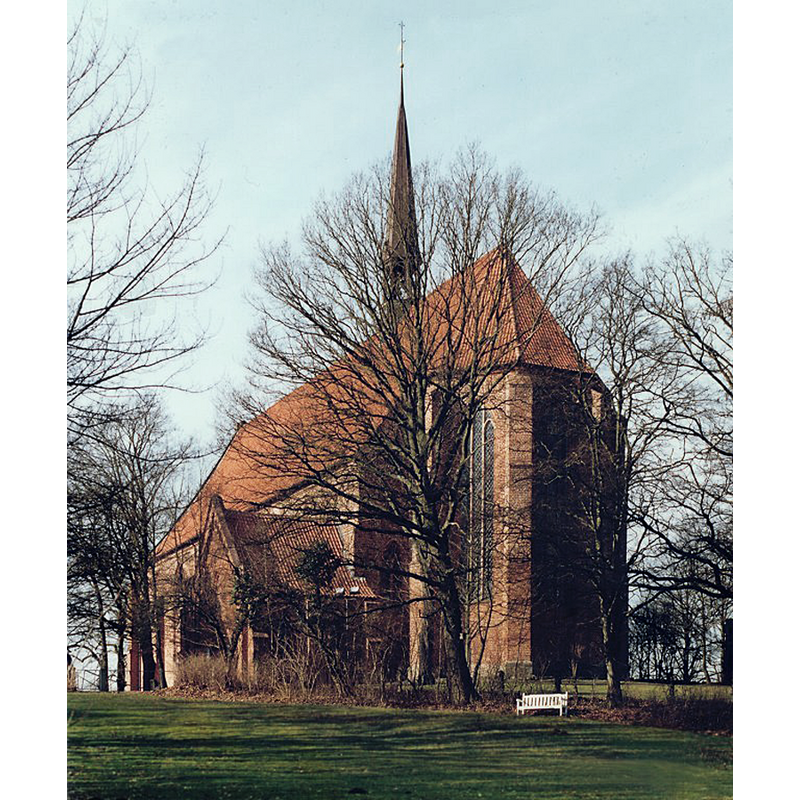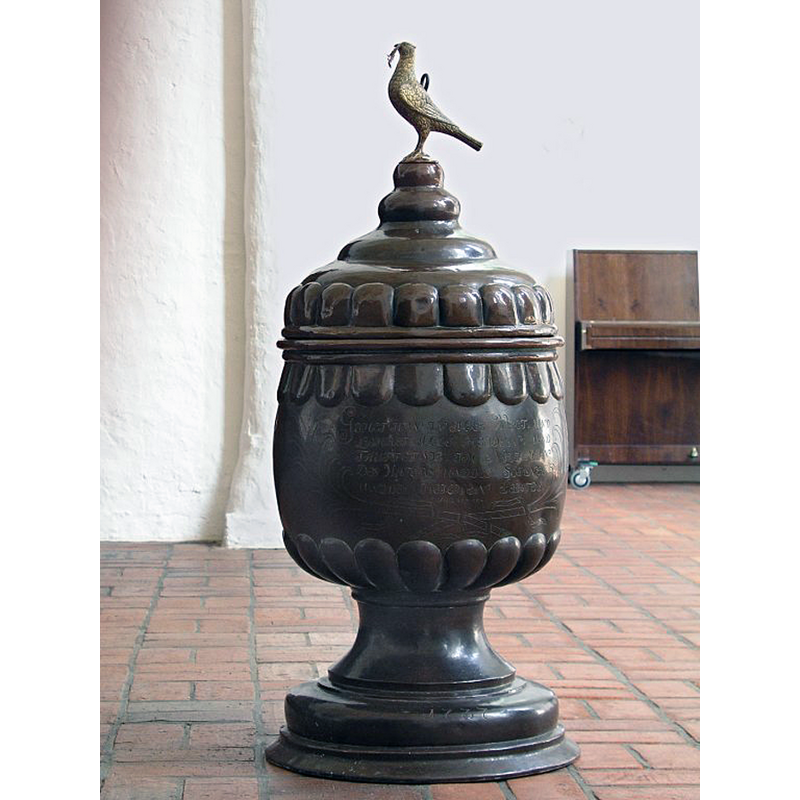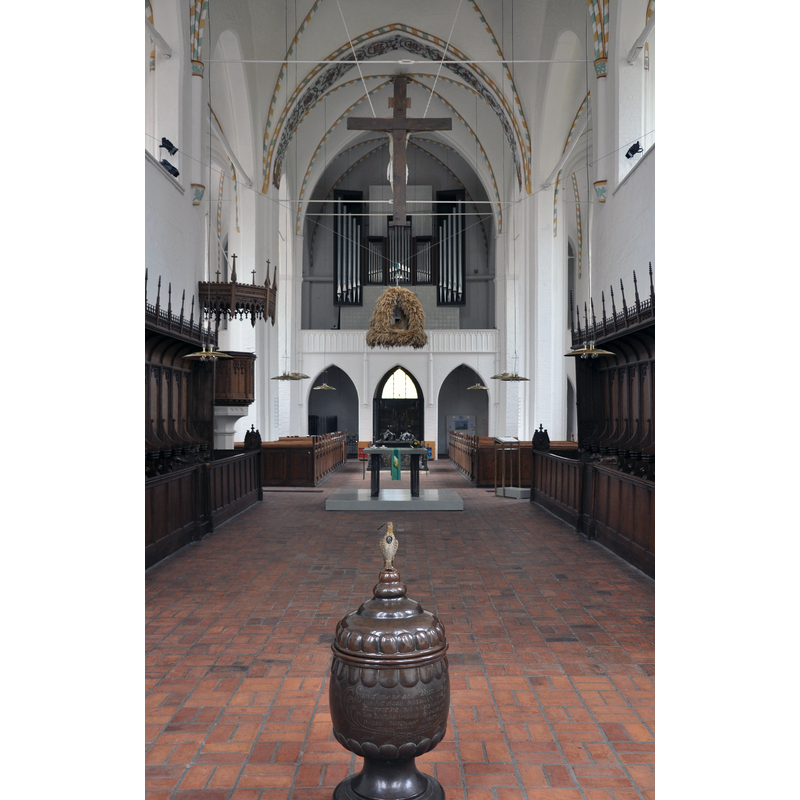Bordesholm

Image copyright © Andreas Praefcke, 2014
CC-BY-SA-4.0
Results: 8 records
animal - mammal - lion - holding shield - coat of arms - Pogwisch Family
Scene Description: one of four believed to have been the support of the baptismal font basin; this one is one of a pair in the Rijksmuseum, Amsterdam
Copyright Statement: Image copyright © Bieke van der mark, 2015
Image Source: digital image of an illustration in Bieke van der mark's Four north German bronze lions from Bordesholm, in The Burlington Magazine, CLVII, Nov. 2015: 749
[201511.40375.pdf] [accessed 14 January 2022]
Copyright Instructions: PERMISSION NOT AVAILABLE -- IMAGE NOT FOR PUBLIC USE
animal - mammal - lion - holding shield - coat of arms - Pogwisch Family
Scene Description: one of four believed to have been the support of the baptismal font basin; this one is one of a pair in the Rijksmuseum, Amsterdam
Copyright Statement: Image copyright © Bieke van der mark, 2015
Image Source: digital image of an illustration in Bieke van der mark's Four north German bronze lions from Bordesholm, in The Burlington Magazine, CLVII, Nov. 2015: 749
[201511.40375.pdf] [accessed 14 January 2022]
Copyright Instructions: PERMISSION NOT AVAILABLE -- IMAGE NOT FOR PUBLIC USE
animal - mammal - lion - holding shield - coat of arms - Pogwisch Family
animal - mammal - lion - holding shield - coat of arms - Pogwisch Family
Scene Description: one of four believed to have been the support of the baptismal font basin; this one is one of a pair in the Hermitage museum, St Petersburg
Copyright Statement: Image copyright © Bieke van der mark, 2015
Image Source: digital image of an illustration in Bieke van der mark's Four north German bronze lions from Bordesholm, in The Burlington Magazine, CLVII, Nov. 2015: 749
[201511.40375.pdf] [accessed 14 January 2022]
Copyright Instructions: PERMISSION NOT AVAILABLE -- IMAGE NOT FOR PUBLIC USE
view of church exterior - southeast view
Scene Description: Source caption: "Bordesholm, Klosterkirche"
Copyright Statement: Image copyright © Uwe Barghaan, 2007
Image Source: digital photograph 22 July 2007 by Uwe Barghaan [https://commons.wikimedia.org/wiki/File:Bordesholm_Klosterkirche_01.jpg] [accessed 14 January 2022]
Copyright Instructions: GFDL / CC-BY-2.5 / CC-BY-SA-3.0
view of font and cover
Scene Description: Source caption: "Bordesholm, Klosterkirche, Taufe" -- the baptismal font of 1737
Copyright Statement: Image copyright © Uwe Barghaan, 2007
Image Source: digital photograph 22 July 2007 by Uwe Barghaan [https://commons.wikimedia.org/wiki/File:Bordesholm_Klosterkirche_Taufe.jpg] [accessed 14 January 2022]
Copyright Instructions: GFDL / CC-BY-2.5 / CC-BY-SA-3.0
view of font and cover - east side
Scene Description: Source caption; "Bordesholm Klosterkirche Taufe" -- the baptismal font of 1737
Copyright Statement: Image copyright © Andreas Praefcke, 2014
Image Source: digital photograph October 2014 by Andreas Praefcke [https://commons.wikimedia.org/wiki/File:Bordesholm_Klosterkirche_Taufe_img01.jpg] [accessed 14 January 2022]
Copyright Instructions: CC-BY-SA-4.0
view of font and cover in context - east side
Scene Description: Source caption: "Bordesholm, Klosterkirche Blick zur Orgel" -- the baptismal font of 1737
Copyright Statement: Image copyright © Andreas Praefcke, 2014
Image Source: digital photograph October 2014 by Andreas Praefcke [https://commons.wikimedia.org/wiki/File:Bordesholm_Klosterkirche_Blick_zur_Orgel.jpg] [accessed 14 January 2022]
Copyright Instructions: CC-BY-SA-4.0
INFORMATION
FontID: 23671BOR
Object Type: Baptismal Font2 (fragment)
Church/Chapel: Klosterkirche Bordesholm [originally an Augustinian monastery church]
Church Location: Lindenpl., 24582 Bordesholm, Germany
Country Name: Germany
Location: Rendsburg-Eckernförde, Schleswig-Holstein
Directions to Site: Located on the NW shore of the Bolderholmer See, E of county roads 7-215, 8 km NNE of Neumünster, about 15 km SSW of Kiel
Font Location in Church: in a museum now
Century and Period: 16th century(early?), Late Gothic
Credit and Acknowledgements: We are grateful to Pol Herman for bringing these fragments to our attention and for his help in documenting the original font
Church Notes: original Augustinian monastery founded 1125 in Neumünster; moved to Bordesholm ca. 1330; expanded 1490; church deconsecrated 1566; became school of Latin; monastery complex -except for the church- demolished 1665;
Font Notes:
Click to view
Bieke van der mark's Four north German bronze lions from Bordesholm, in The Burlington Magazine, CLVII, Nov. 2015: 749
[201511.40375.pdf] [accessed 14 January 2022] suggests that the four lions that were part of the Wolfgang Pogwisch tomb were originally part of the baptismal font: "THE SCULPTURE COLLECTION of the Rijksmuseum, Amsterdam, contains two nearly identical, monumental bronze lions. Although the function and origin of these striking works has long been elusive, their artistic importance and historical rarity has always been recognised, and they have continuously been on display since their acquisition in 1952.1 The animals are portrayed roaring, showing their formidable teeth (Figs.10 and 11). Their faces, characterised by stylised lines around the eyes, noses and gaping mouths, give way to long, flowing manes. In their front paws they clutch shields with armorial devices – one with a leaping wolf, the other with three roses – which remained unidentified until recently. There are integrally moulded, blockshaped brackets on the lions’ rumps, evidently intended to support some larger object. On somewhat flimsy stylistic grounds the museum had presented them, since their acquisition, as late Gothic Venetian works.2 Not only can this attribution now be corrected but their provenance from an important north German church has been established and a hypothesis concerning their original function can be put forward. [...] The Rijksmuseum bought the sculptures eighteen years later at the liquidation sale of the N.V. tot Uitoefening van den Kunsthandel held by Frederik Muller in Amsterdam." The two lions were taken away to Germany during WWII, but reclaimed afterwards by the Stichting Nederlands Kunstbezit: "The Dutch Restitution Committee successfully traced and returned the bronzes to the Hamburger brothers in 1948. The
brothers auctioned them at the liquidation sale of their company in March 1952 [...] Leithe-Jasper dated the bronze to around 1350, and one can indeed associate the lions’ archaic appearance, especially the stylised lines on their faces, with examples from the fourteenth century. [...] Problematic for a fourteenth-century date, however, is the elaborate shape of the escutcheons with inverted lance rests below the upper corners on either side. This type of armorial shield did not emerge in German heraldry until the early sixteenth century [...] obvious explanation for this stylistic discrepancy – that the shields are later replacements – was refuted by technical examination: the alloy of the shields is almost identical to that of the lions, and they have the same patina.20 Since this is a very strong indication that the components have always belonged together, it implies that the lions are actually sixteenth rather than fourteenth century. Until recently, it had not been realised that an identical pair of bronze lions can be found in the collection of the Hermitage, St Petersburg, with two further armorial devices on their escutcheons [...] Having the set of four coats of arms (Figs.15a–d) allowed the identity of the patrons to be established. They belonged to Wolfgang (Wulf) Pogwisch zu Buckhagen (c.1485–1554) and his wife Christine (Kirsten) Mogensdatter Munk (Lange) (died 1579) [...] it is in an inventory of this monastic church, drawn up by Ambtsecretar (Secretary to the Office) Dr W. Lüders in 1861, that we encounter a lengthy description of four armigerous lions in recumbent pose holding the same shields.25 He assumed the lions had been used for supporting some object which ‘must have been erected by Wolfgang Pogwisch and therefore must derive from the early sixteenth century’. Apart from some minor discrepancies, Lüders’s detailed specifications and dimensions
exactly match the bronzes in Amsterdam and St Petersburg. [...] It is very unlikely that the bronzes originally formed part of Wolfgang Pogwisch’s tomb, even though it appears that they at some point functioned as temporary supports of his slab [...] It is much more likely that the lions formed the base of some large bronze liturgical object, such as a monumental candelabrum [...], a tall sacramental tabernacle [...] or – and given the region this is
by far the most probable hypothesis – a baptismal font." The author suggests that the basin of the font may have been disposed of and sold off for its metal value, arguing that "Over the centuries many other bronze baptismal fonts in north Germany have been melted down and replaced by new ones". The author further informs that the second pair, now in the Hermitage museum [...] formed part of the celebrated collection of Medieval and Renaissance art belonging to Count Alexander Petrovich Basilevsky (1829–99), a Russian diplomat stationed in Paris, and a description of them is
included in his catalogue of 1874.61 The lions made their way to St Petersburg when the Basilevsky collection was bought en bloc for 5.5 million francs in December 1884 by Tsar Alexander III for the Hermitage.62 Initially they were placed on show in the museum of the former Baron Stieglitz Central School of Industrial Arts, but in 1947 they were transferred to the Hermitage where they were inventoried as ‘twelfth century, French School’. They were still described as such in a set of reproductions in 1975.63 In 2007 the origin was tentatively changed to ‘Venice, early fifteenth century’, led astray by the Rijksmuseum’s attribution of its pair.64 Finally the four lions can be seen for what they really are: important examples
of early sixteenth-century noble patronage at the Augustine monastery in Bordesholm." In a communication to Pol Herman the author Bieke van der mark wrote: " I speculate in my article that the font of Bordesholm, along with the bronze church vessels, was taken from the church and melted down for the casting of armor for the Duke of Gottorf. The latter is actually registered; it took 24 horses to pull the carts with the bronze from the church to the gun foundry, so that sounds a heavy load ! In other words, there must have been a baptismal font on the carts. In any case, the lions with the coats of arms were spared, I suspect out of respect for the Pogwisches, a well-known and important family of knights (because of their involvment in the foundation history of the church). Many bronze fonts have been melted down over the centuries, for example if they went out of taste or if one wanted to sell the bronze or if local authorities wanted to use the metal for producing artillery weapons. It wouldn't surprise me if this also happened to an older baptismal font in Oirschot and that the lions, just like in Bordesholm, were spared out of respect for the family (because of the coats of arms)." The present font in the church dates from 1737.
COORDINATES
Church Latitude & Longitude Decimal: 54.176111, 10.011667
Church Latitude & Longitude DMS: 54° 10′ 34″ N, 10° 0′ 42″ E
UTM: 32U 566033 6003589



